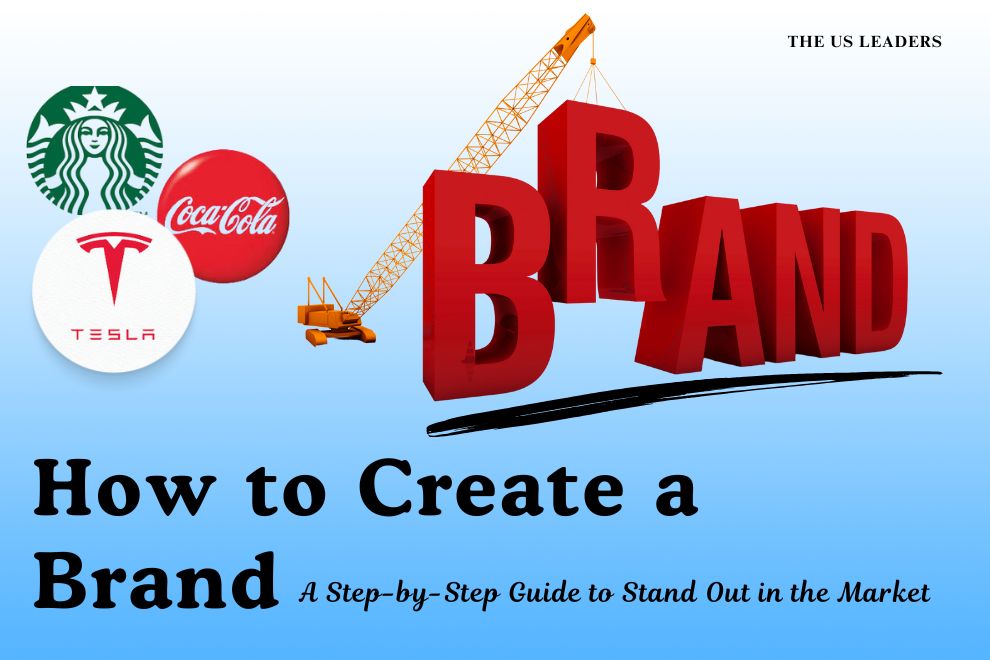In today’s competitive landscape, having a strong brand isn’t optional; it’s essential. Your brand isn’t just a logo or tagline; it’s people’s overall perception of your business. A powerful brand creates trust, fosters loyalty, and sets you apart from competitors. If you’re wondering how to Create a brand that truly resonates, this comprehensive guide will walk you through the essential steps.
Step 1: Define Your Brand Purpose and Mission
Every great brand starts with a clear purpose. Ask yourself:
- Why does your business exist?
- What problems do you solve?
- What values drive your company?
Your mission statement should reflect the answers to these questions. For example, if you’re starting an eco-friendly clothing brand, your mission might be: “To provide sustainable fashion that empowers conscious consumers to make environmentally friendly choices.”
Step 2: Understand Your Target Audience
A successful brand connects deeply with its audience. To do this, you need to know who they are and what they care about. Conduct market research to identify your ideal customers:
- Demographics: Age, gender, location, income level
- Psychographics: Interests, values, challenges, buying behaviors
Tools like Google Analytics, surveys, and social media insights can help gather this data. The better you understand your audience, the easier it is to create a brand that speaks their language.
Step 3: Research Your Competitors
Analyzing your competition is key to differentiating your brand. Look at their:
- Brand messaging and tone
- Visual identity (logos, colors, fonts)
- Strengths and weaknesses
Identify gaps in the market and opportunities where your brand can offer something unique. For instance, if competitors in your niche focus on affordability, you could position your brand around premium quality or exceptional customer service.
Step 4: Craft Your Unique Brand Identity
Your brand identity encompasses all the visual and verbal elements that make up your brand. This includes:
Logo
Your logo is the face of your trademark. It should be simple, memorable, and aligned with your brand’s personality. Tools like Canva or professional designers can help you create a standout logo.
Color Palette
Colors evoke emotions and associations. Choose a palette that aligns with your brand values. For example:
- Blue: Trust and professionalism
- Green: Sustainability and growth
- Red: Energy and passion
Typography
Select fonts that reflect your brand’s tone. A modern brand might use sleek, sans-serif fonts, while a vintage brand could lean on decorative serif fonts.
Tagline
Your tagline is a short, catchy phrase that sums up your brand. Think of Nike’s “Just Do It” or Apple’s “Think Different.”
Step 5: Develop a Consistent Brand Voice
Your brand voice is how you communicate with your audience. It should be consistent across all platforms, from your website to social media. Consider:
- Tone: Is your brand playful, professional, or inspirational?
- Language: Do you use formal or conversational language?
- Messaging: What key messages do you want to convey consistently?
A content style guide can help ensure everyone on your team uses the same voice.
Step 6: Build Your Online Presence
In today’s digital world, your online presence is crucial for brand visibility. Here’s how to establish it:
Website
Create a professional, user-friendly website that reflects your brand identity. Ensure it’s mobile-responsive and optimized for search engines (SEO). Include key elements like:
- An About Us page to share your story
- A blog to provide value and showcase expertise
- Clear calls-to-action (CTAs) for conversions
Social Media
Choose platforms where your target audience spends their time. Maintain a consistent brand aesthetic and post engaging content, such as:
- Educational posts
- Behind-the-scenes insights
- User-generated content
Email Marketing
Build an email list to stay connected with your audience. Use newsletters to share updates, promotions, and valuable content.
Step 7: Create Valuable Content
Content marketing is an excellent way to build trust and authority. Develop content that solves your audience’s problems and aligns with their interests. This can include:
- Blog posts
- Videos
- Infographics
- Podcasts
Optimize your content with relevant keywords to improve its visibility on search engines. For example, if your brand focuses on fitness, you might create a blog titled “10 Simple Exercises to Stay Fit at Home.”
Step 8: Foster Customer Relationships
A strong brand is built on loyal customers. Foster these relationships by:
- Providing exceptional customer service
- Engaging with your audience on social media
- Encouraging reviews and testimonials
Show appreciation through personalized messages, loyalty programs, or exclusive offers.
Step 9: Monitor and Evolve
Brand building isn’t a one-time task; it’s an ongoing process. Use tools like Google Analytics, social media insights, and customer feedback to track your brand’s performance. Stay open to change and adapt as your business grows or market trends shift.
FAQs About How to Make a Brand
1. How long does it take to build a brand? Building a strong brand can take months or even years. It’s a gradual process that requires consistent effort and adaptation.
2. Do I need a big budget to create a brand? Not necessarily. Many tools like Canva, Wix, and social media platforms allow you to create a professional brand on a budget.
3. What are some examples of successful branding? Examples include Coca-Cola’s emotional storytelling, Tesla’s innovative image, and Starbucks’ focus on customer experience.
Final Thoughts
Creating branding is about more than just visuals; it’s about building an emotional connection with your audience. By following these steps, you can develop a brand that not only stands out but also fosters loyalty and trust. Start today, and let your brand’s unique story shine!
Read: Larry Ellison: The Visionary Behind Oracle and a Tech Icon
